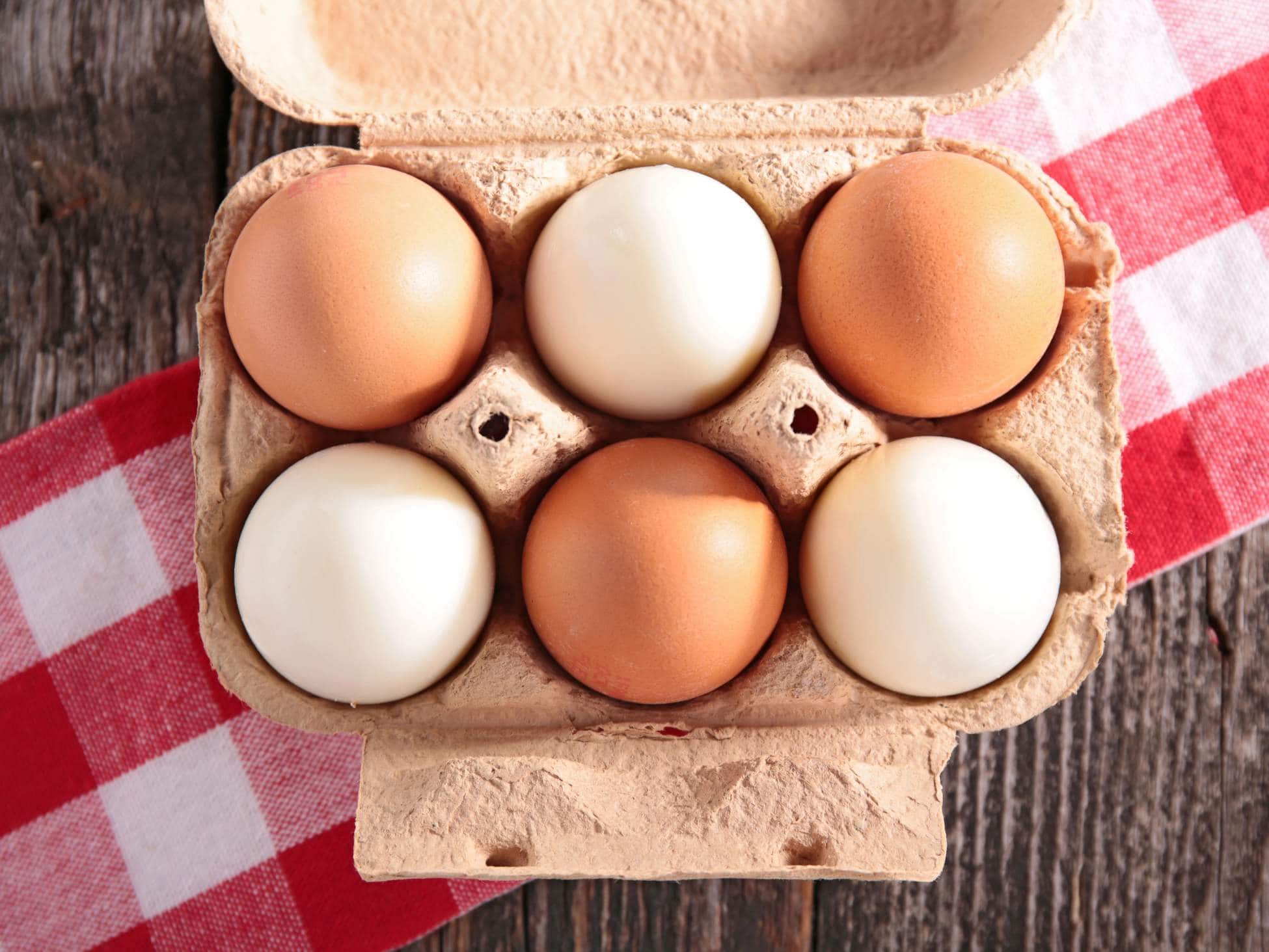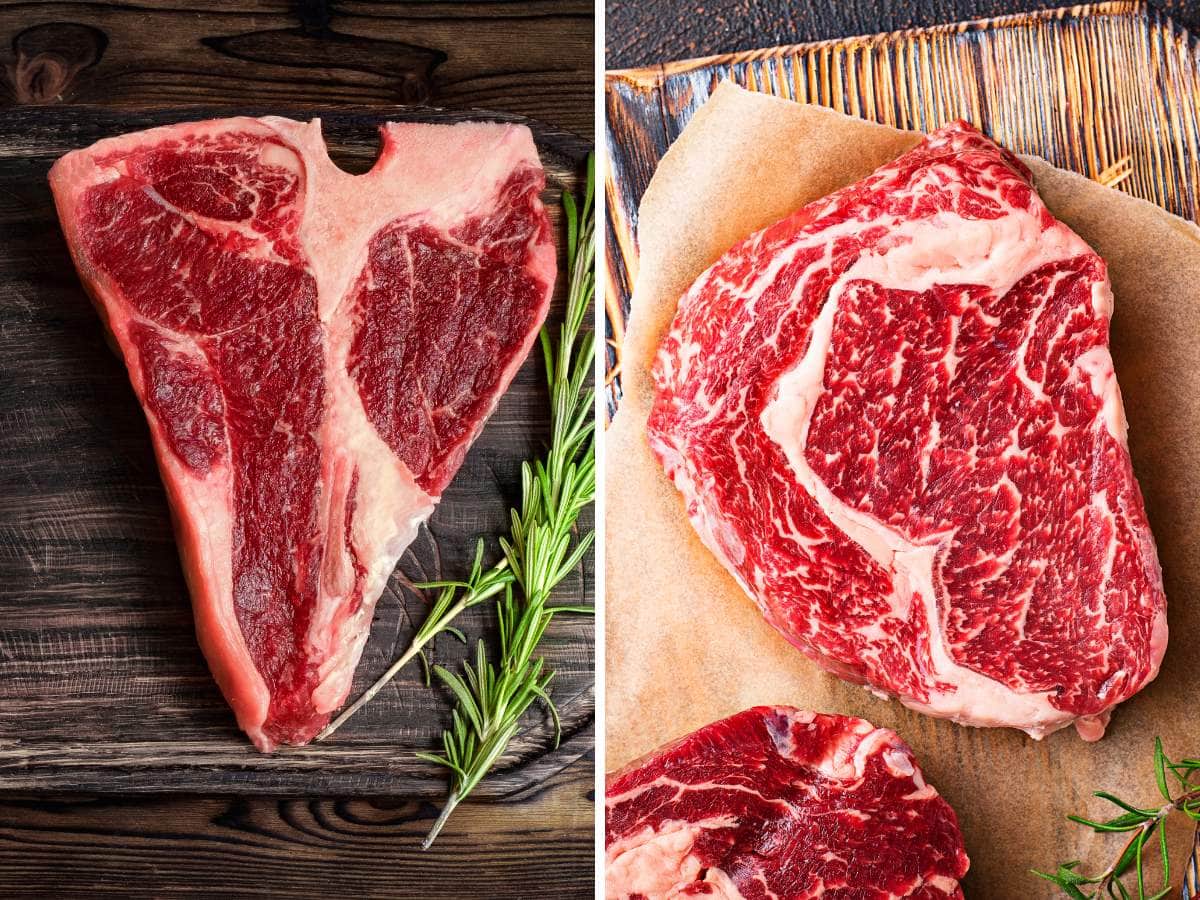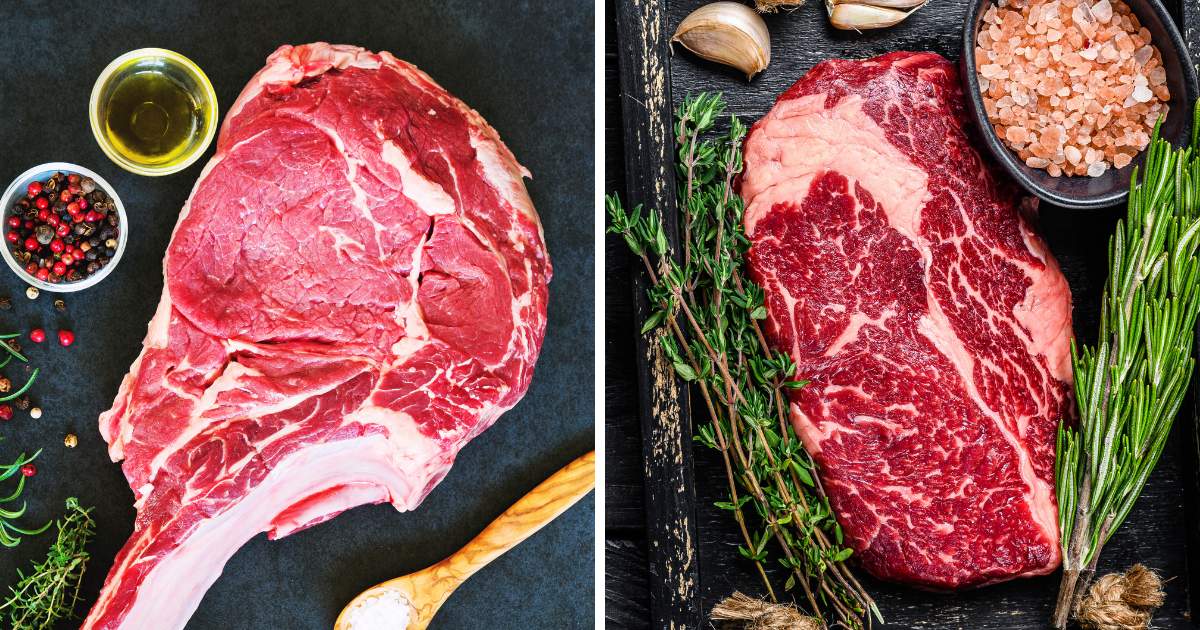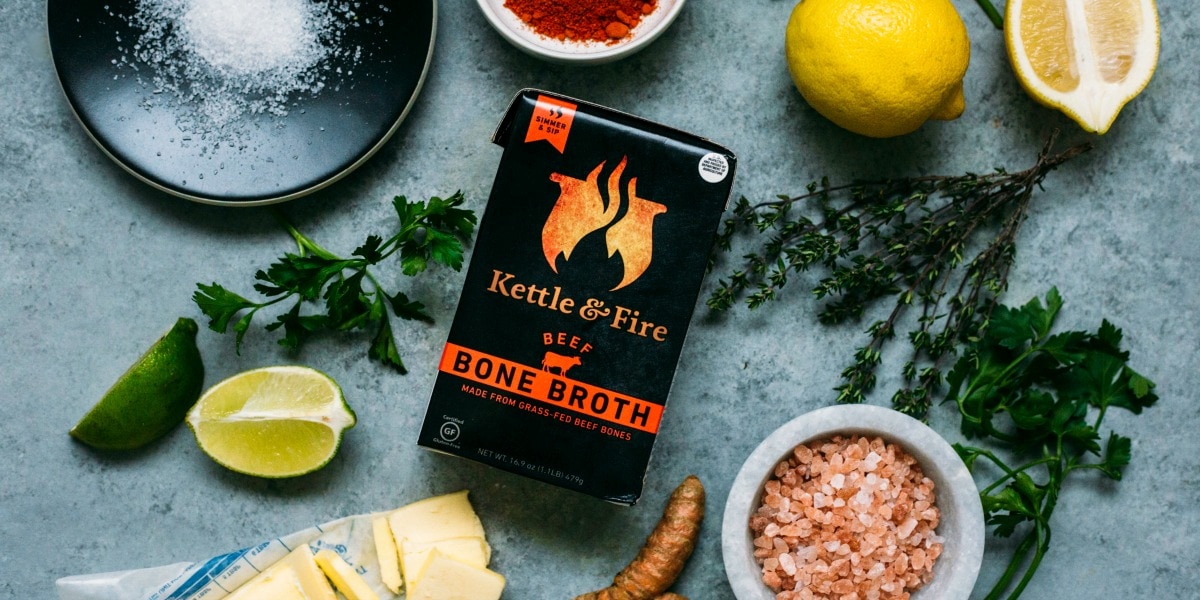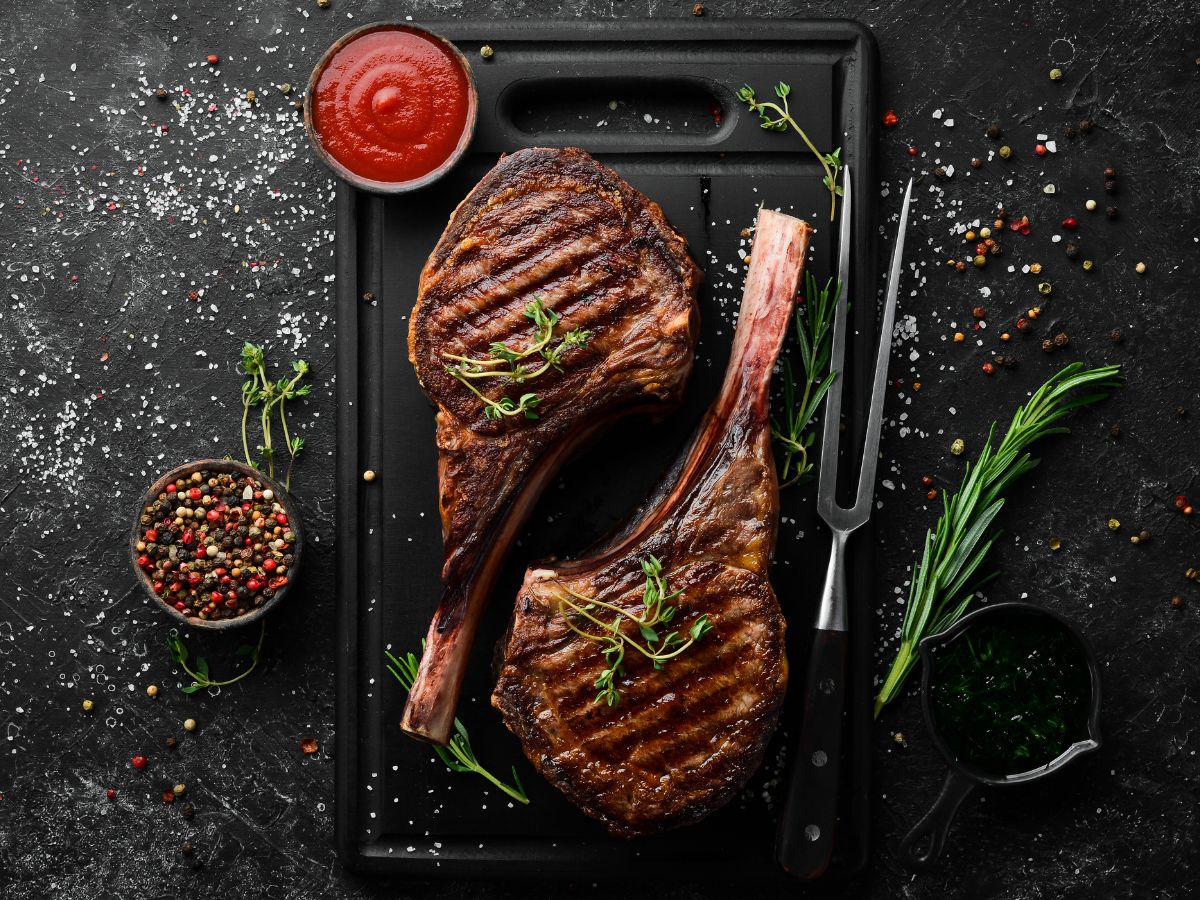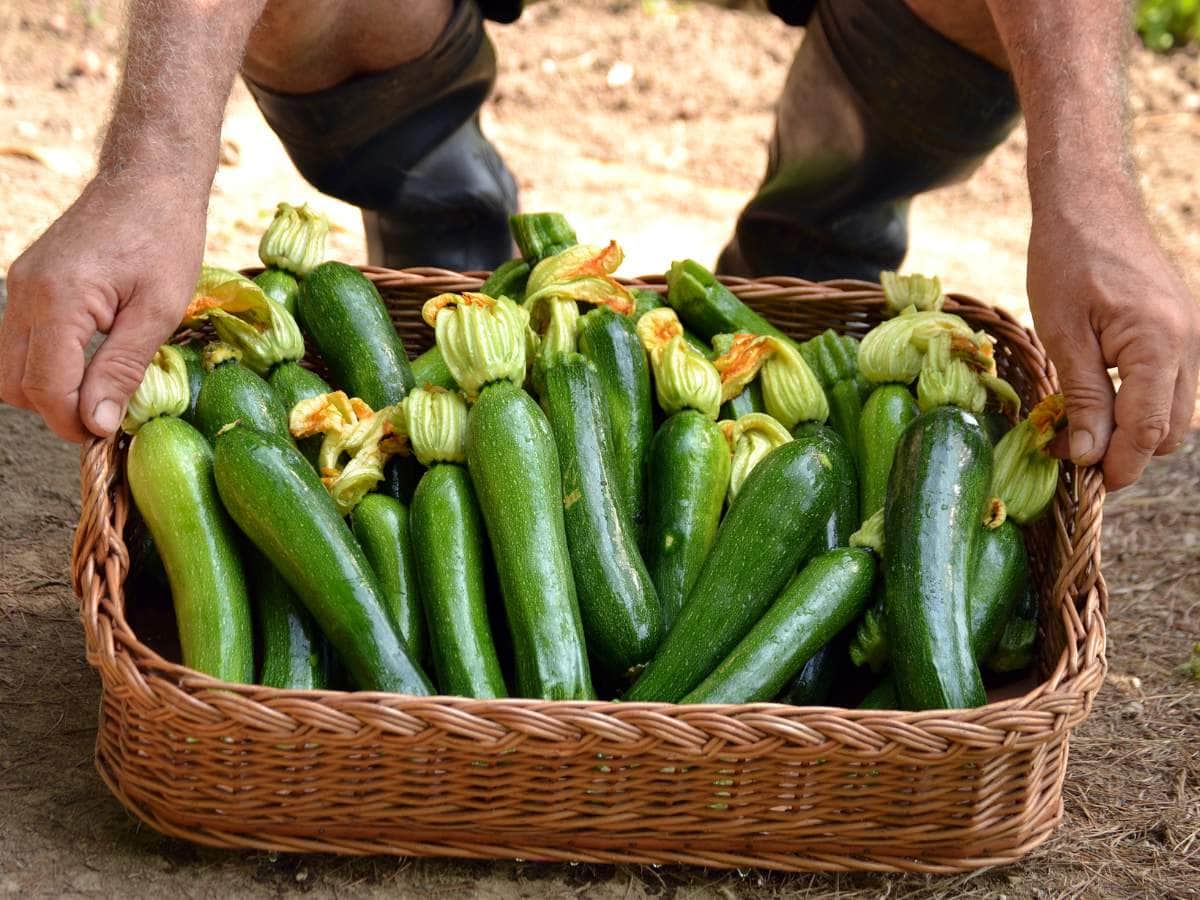Meat the Best: Top 5 Steaks Perfect for Grilling
Primal Edge Health participates in the Amazon Services LLC Associates Program and other affiliate programs and therefore, may collect a share of sales or other compensation from the links on this page. This comes at no additional cost to you, and all the prices and availability are accurate at the time of publishing.
Craving that charred, smoky flavor only achieved from grilling a beautiful cut of steak? Navigate the butcher’s counter with this guide to the top 5 steaks perfect for grilling. Whether you’re an amateur grill master or a seasoned pitmaster, these steak selections will upgrade your next cookout.
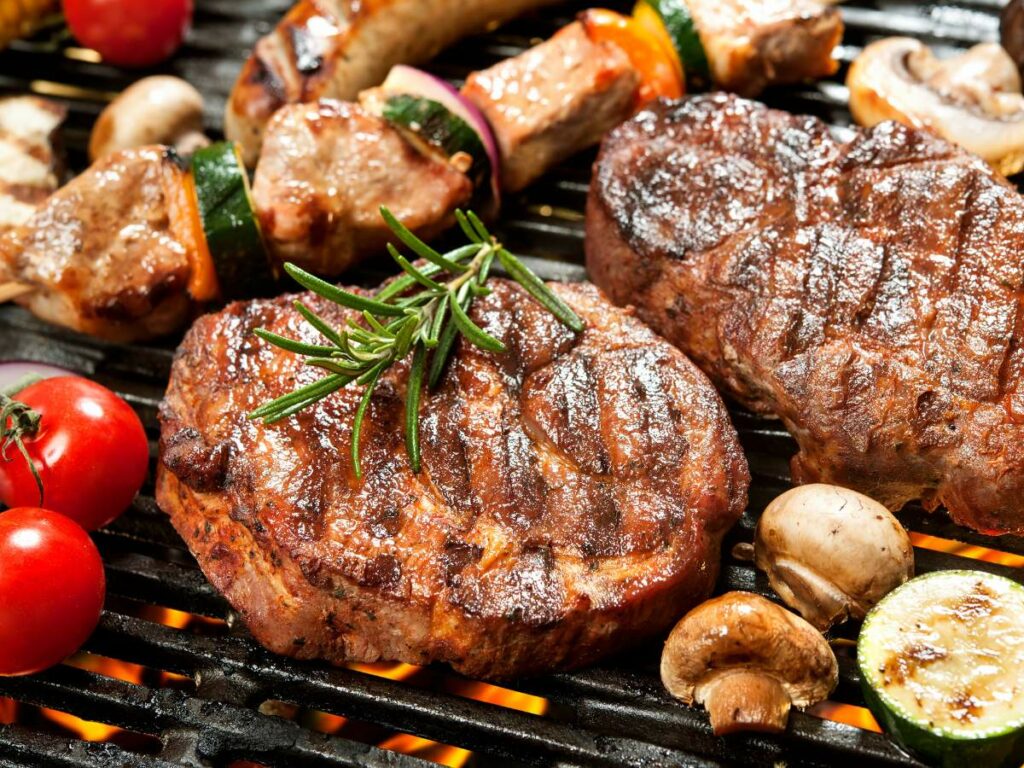
There’s truly nothing that compares to the satisfaction of sinking your teeth into a perfectly grilled steak. However, the array of beef cuts on offer can make it tricky to know which will give you the most bang for your buck.
From cheap cuts of meat to luxurious ones for special occasions, every steak brings its unique texture and flavor to the table. Let’s take a look at how to make the perfect steak, from buying high-quality meat to making sure your steak is cooked just how you want it.
Table of Contents (click to view)
Top 5 Best Steaks for Grilling
Unravel the mystery and dive into the world of the best steaks for grilling, offering foolproof tips for cooking each one just right. By learning about each cut, you’ll soon be a master at grilling steak recipes to perfection.
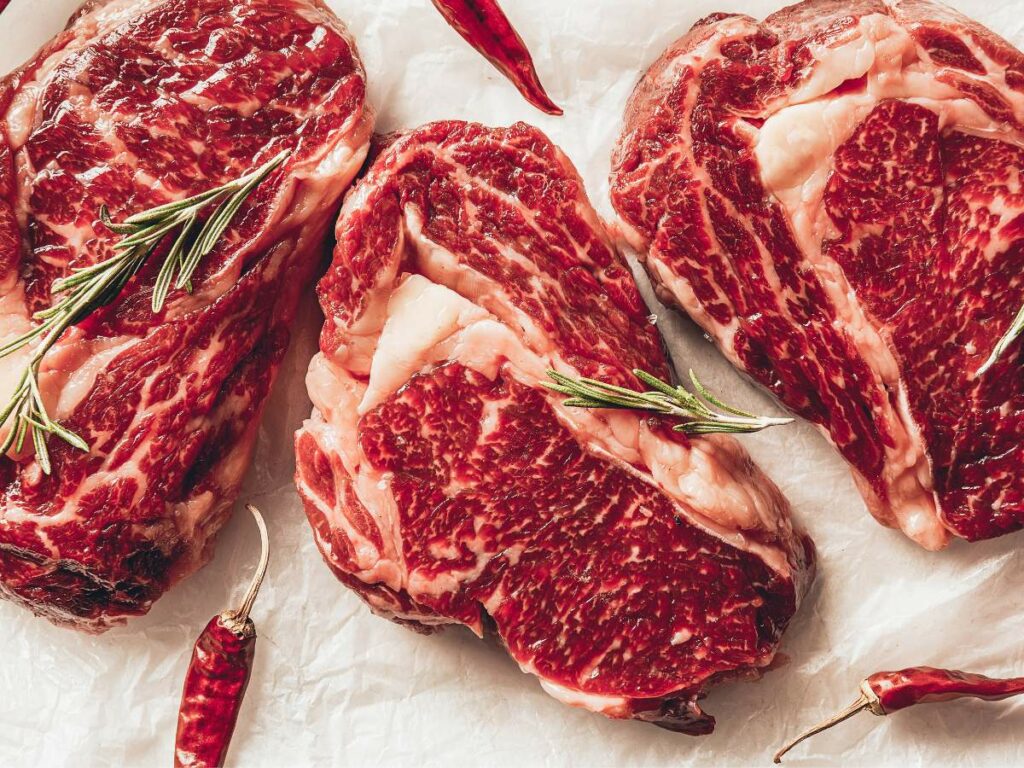
Ribeye Steak
Easily the most popular steak for grilling, it’s known for its rich marbling, which results in a juicy and tender cut when grilled. Ribeye steaks have a good balance of meat and fat, making them ideal for high-heat grilling.
New York Strip
When left with the bone in, this cut has less fat than a ribeye but still offers excellent flavor and tenderness. It’s good for grilling due to its uniform shape and thickness, ensuring even cooking. Plus, the New York strip’s hearty texture and robust beef flavor make it a popular choice for those who prefer a leaner steak without sacrificing taste.
Filet Mignon
One of the leaner cuts, filet mignon, is prized for its tenderness. While it’s less flavorful compared to fattier cuts, it’s perfect for grilling hot and fast or with bacon wrapped around it to add more flavor. This cut is ideal for special occasions or when you want a luxurious dining experience.
T-Bone Steak
A T-bone steak is two steaks in one and includes a sizable chunk of tenderloin and a larger piece of strip steak, separated by a T-shaped bone. This cut is known for its tenderness and flavor, offering the best of both worlds for steak lovers.
T-bone is known for its tenderness and flavor and is a popular choice for grilling. It’s also a more affordable option than ribeye but still offers a nice experience, especially if you want a more tender steak.
Porterhouse Steak
The Porterhouse steak is often considered the “king of steaks.” It’s similar to a T-bone but is cut from the rear end of the short loin and, therefore, contains more tenderloin. If a T-bone’s tenderloin section is at least one and a quarter inches across, it qualifies as a Porterhouse. It’s a large cut that is perfect for grilling and is often shared among multiple people due to its size.
“For me, it’s hard to beat a ribeye steak because they’re easy to grill and full of flavor. In fact, it’s the cut used to determine the grade and quality of the entire cow because it offers the best representation of fat distribution. When I’m looking for something leaner, but amazingly tender, I go with a filet mignon. Strip steaks are also a great choice. You just need to make sure to slice the meat against the grain to ensure a tender bite.”
— Christie Vanover, Pro Pitmaster GirlsCanGrill, Food Network BBQ Brawl
Special Mention: Flank Steak
Another great cut of steak is the flank steak. Flank steak is known for its robust flavor and lean texture. It’s a versatile cut that’s excellent for grilling, marinating, and slicing thin against the grain to maximize tenderness.
Flank steak is perfect for dishes like fajitas, steak salads, and stir-fries. It’s my favorite cut when I want something bold and beefy with a bit of a chew.
Here’s a bonus choice: beef strip loin. It’s more tender than flank steak and has nice marbling, perfect for serving with a few choice sides.
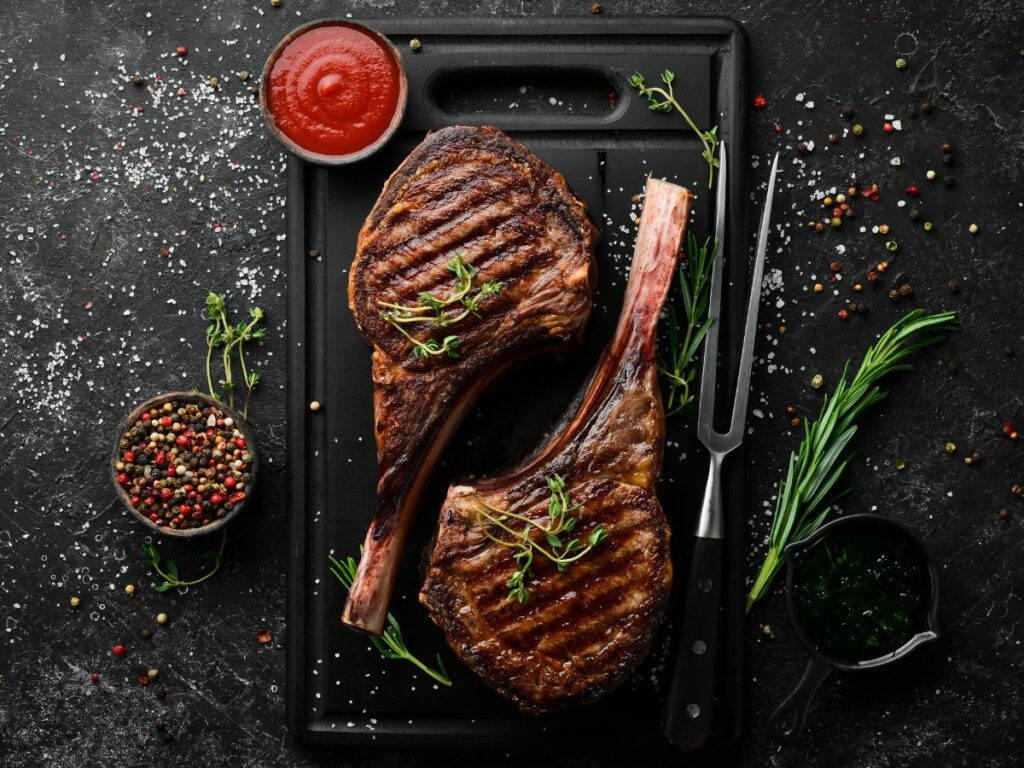
Tips for Grilling a Great Steak
Grilling a great steak isn’t just about your skills on the grill. Here is a step-by-step guide on how to buy, prep and cook the perfect steak.
Choosing the Right Cut
Choosing the right steak for grilling begins at the grocery store. Look for bright red steaks with good marbling. For ease of cooking, choose steaks that are one to one and a half inches thick for the best balance of searing and internal doneness. If buying several steaks, make sure they are all similar in weight and thickness so they will cook evenly at the same time.
The United States Department of Agriculture (USDA) grades beef based on the degree of marbling and the maturity of the meat. Prime is the highest grade, representing the most tender and flavorful cuts with abundant marbling. Choice is the middle tier, offering high quality but less marbling than Prime but easily found at local markets. Finally, Select is leaner and may lack some tenderness and juiciness due to less marbling. The grade of the meat will be marked on the package.
Prep the Meat
After you’ve picked your perfect steak, remember that preparation is key. Season your beef with a sprinkle of mineral-rich salt well before you plan to grill it. Be sure to season generously as this will also help tenderize the steak, plus some of it will inevitably come off during grilling. Aside from salt, here are other seasoning options you can try:
- Black pepper
- Garlic powder
- Onion powder
- Paprika
- Crushed red pepper flakes
- Rosemary
- Thyme
- Cumin
- Chili powder
- Mustard powder
- Brown sugar
- Smoked sea salt
- Lemon pepper
- Coriander
- Worcestershire sauce
Take your steak out of the fridge at least 20 minutes before you plan to cook it, allowing it to come up to room temperature. This will help with a more even cook.
But what about a frozen steak? Start by thawing it out. The best way is to pop it in the fridge for a day or two. If you’re in a hurry, put it in a sealed bag and soak it in cold water, changing the water every half hour.
Once it’s thawed, pat it dry with some paper towels to get rid of the moisture so you can get a good sear. Season it well with salt, pepper, or your favorite spices, and let it sit at room temperature for about 20-30 minutes before cooking to make sure it cooks evenly.
Set up The Grill
Gather all your grill tools to make cooking easier. These include your spatula, tongs, and meat thermometer, as well as your meat gloves if you plan to handle your steak directly while slicing it. Next, set up your grill.
Grilling imparts a smoky flavor and is excellent for most cuts. Understanding how to set up your charcoal grill and build a two-zone fire, and the difference between direct and indirect grilling is key to mastering the art of grilling steaks.
Direct grilling involves cooking the steak directly over the heat source. It’s great for searing the beef, creating a delicious caramelized crust. This method is best for cuts like the ribeye, which have good marbling or thinner cuts that don’t need long over the heat.
Indirect grilling is when the meat is cooked away from the heat source, allowing it to cook slower and more evenly. This method is suitable for larger or tougher cuts that need time to become tender.
Steak Doneness
Remember, steak temperatures are taken before the meat has rested. The meat will continue to cook as it rests. You should pull the steak off the grill a few degrees lower than you ultimately want to serve it at, as it will continue to cook from residual heat. This is also important when reverse searing steak so that the meat isn’t overcooked during the final sear. Always use a digital thermometer for accurate temperature readings.
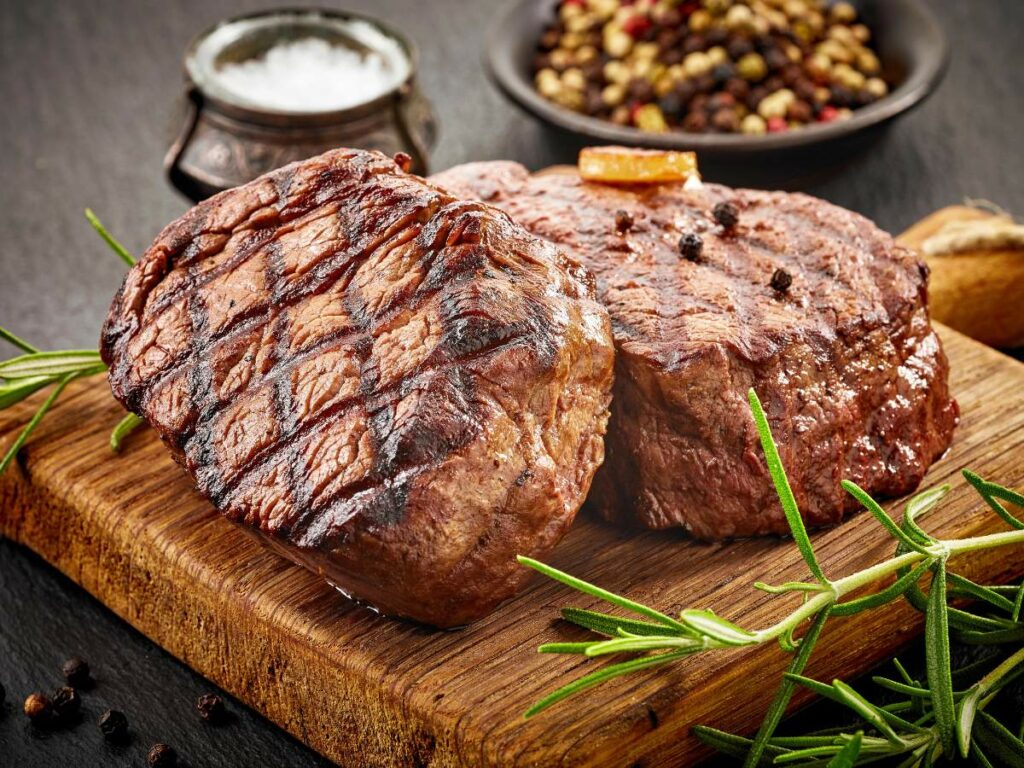
The Ultimate Steak Doneness Hack
While a digital thermometer is the most accurate way to check the doneness of a steak, many grill masters prefer the “hand test” as a quick and convenient alternative. This method involves using the firmness of the flesh at the base of your thumb to compare against the feel of your steak. Here’s how to do it:
The Hand Test Method
- Rare (125°F)
- Touch your index finger to your thumb and feel the base of your thumb (the fleshy part below your thumb).
- The muscle should feel soft and give way easily when pressed. This is how a rare steak feels.
- Medium-Rare (135°F)
- Touch your middle finger to your thumb and feel the base of your thumb.
- The muscle should feel a bit firmer but still have some give. This is similar to the feel of a medium-rare steak.
- Medium (145°F)
- Touch your ring finger to your thumb and feel the base of your thumb.
- The muscle should feel firm but with a slight spring. This represents the feel of a medium steak.
- Medium-Well (150°F)
- Touch your pinky finger to your thumb and feel the base of your thumb.
- The muscle will feel quite firm, indicating the doneness of a medium-well steak.
- Well-Done (160°F)
- For well-done steaks, the flesh will feel very firm with minimal give, resembling the feel of a well-done steak.
Cook the Perfect Steak Every Time
There you have it, the top choices for the best steaks to grace your grill. No matter which you choose, there’s a cut for every palate, occasion and budget.
Remember, no matter the cut, good seasoning and knowing your cooking times are the secret to achieving that perfect, juicy bite. Fire up that grill, grab your favorite cut and enjoy the pure, mouth-watering bliss that only a well-grilled steak can offer.
Portions of this article first appeared on Food Drink Life.


